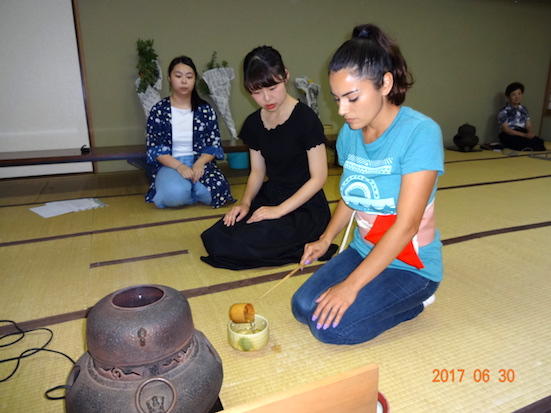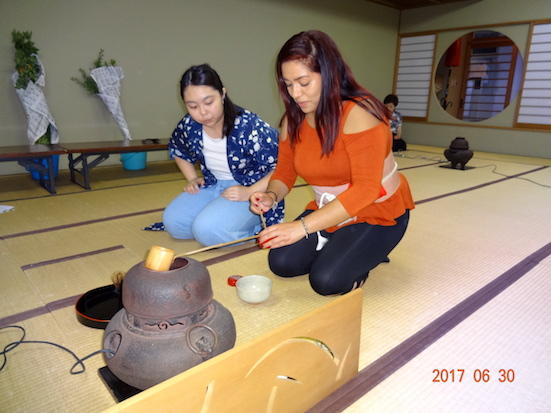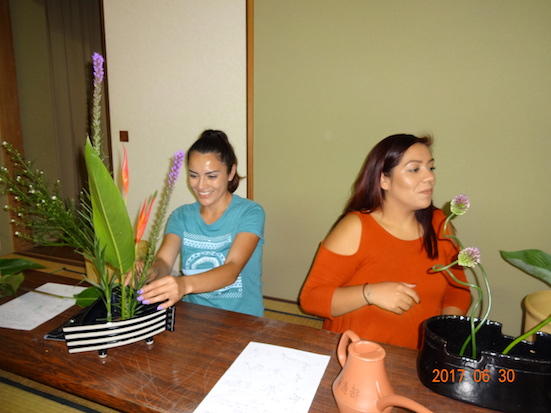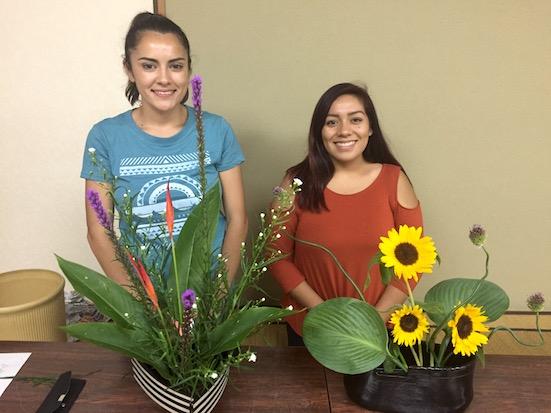2017 Bunkyo/Cabrillo ECE Internship Program
2017 Bunkyo / Cabrillo ECE Internship Program Website #5-2
2017.06.30

2017/06/30
They left for the tea room after this visit. At first, Anabel put on obi sash (Japanese belt for kimonos), folded fukusa (a small silk cloth used in the tea ceremony) in triangle, and tucked it into the obi sash. Then she tried making a bowl of tea after watching the Bunkyo student’s tea preparations.
学生たちと写真をたくさん撮ってから、彼女たちは茶室に向かいました。この写真は、アナベルが茶道部員の模範作法を見た後で、お茶をたてているところです。袱紗を挟む帯もきまっていますね。

2017/06/30
Then it’s Yovania’s turn to make tea. She asked the tea master what was the purpose of tea ceremony. She answered that during a tea ceremony the participants enjoy delicious tea, appreciate works of art, and share a good time together. In the art of tea the term “Ichi go ichi e”, meaning “one chance in a lifetime,” is of extreme importance and signifies that the tea master tries to make the tea with his whole heart. So treasure every meeting, for it will never recur!
次はヨバニアの番です。その後で、彼女は茶会の目的は何かと先生に質問しました。先生から「一期一会で一つの茶碗からお茶を飲むことで時間と空間を共有し共感する。」とお答えがあり、二人は納得していました。二度と来ないこの出会いを大事にしながら、お茶の心を堪能した二人でした!

2017/06/30
In Japan, people do not say “arrange flowers”. They say “hana o ikeru”. It means giving life to the flower. When Japanese arrange flowers, they make them look more beautiful but they also try to feel nature. In other words, Ikebana is like one of the ways to communicate with nature. Were Yovania and Anabel communicating with nature then?!
日本では華道は「生け花」とも言われています。つまり、花を生かすということです。お花を自然に帰し、自然とのコミュニケーションをすることにもなるようです。二人ともそれぞれ異なるスタイルで自然との会話を楽しんでいるようですね!

2017/06/30
Look at this! This was the first time for them to arrange the flowers, but they did it beautifully!
二人とも生け花は初めてといいながらとても素敵に完成しました。
